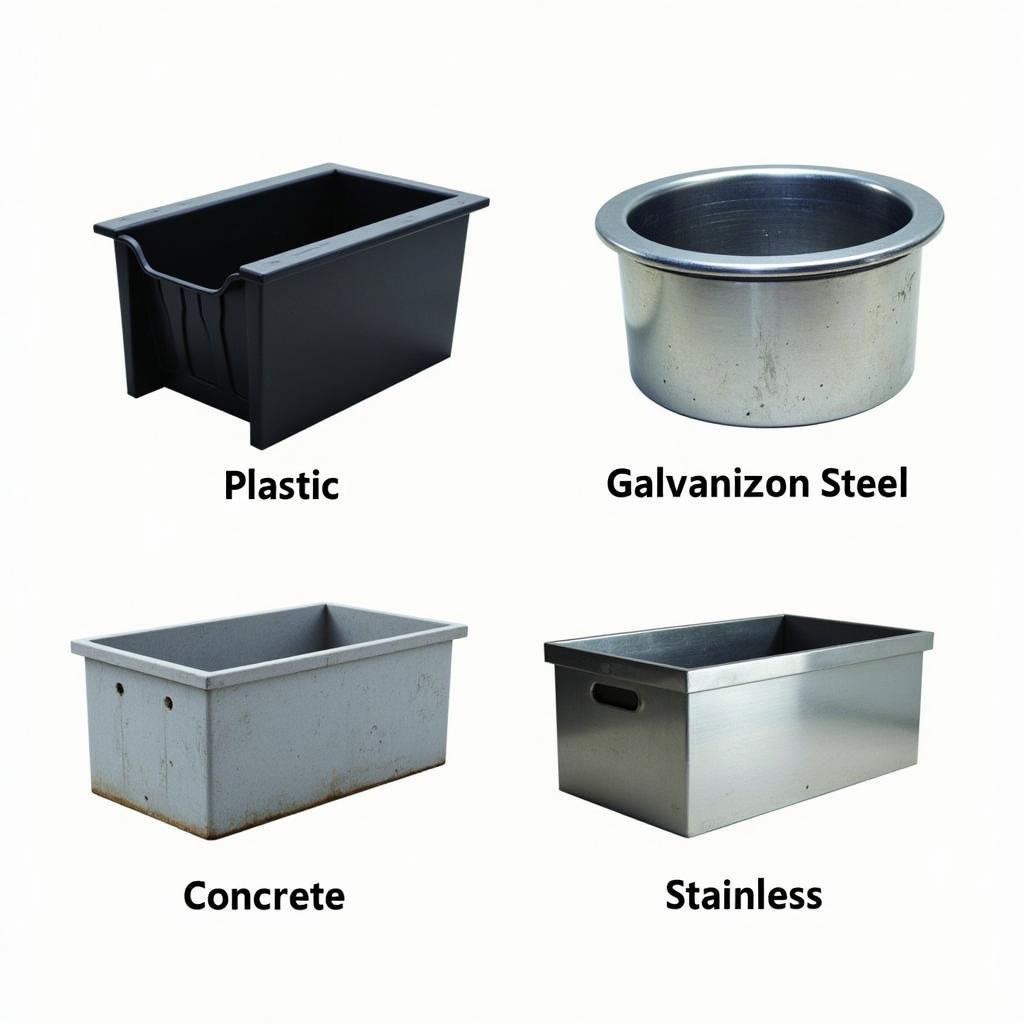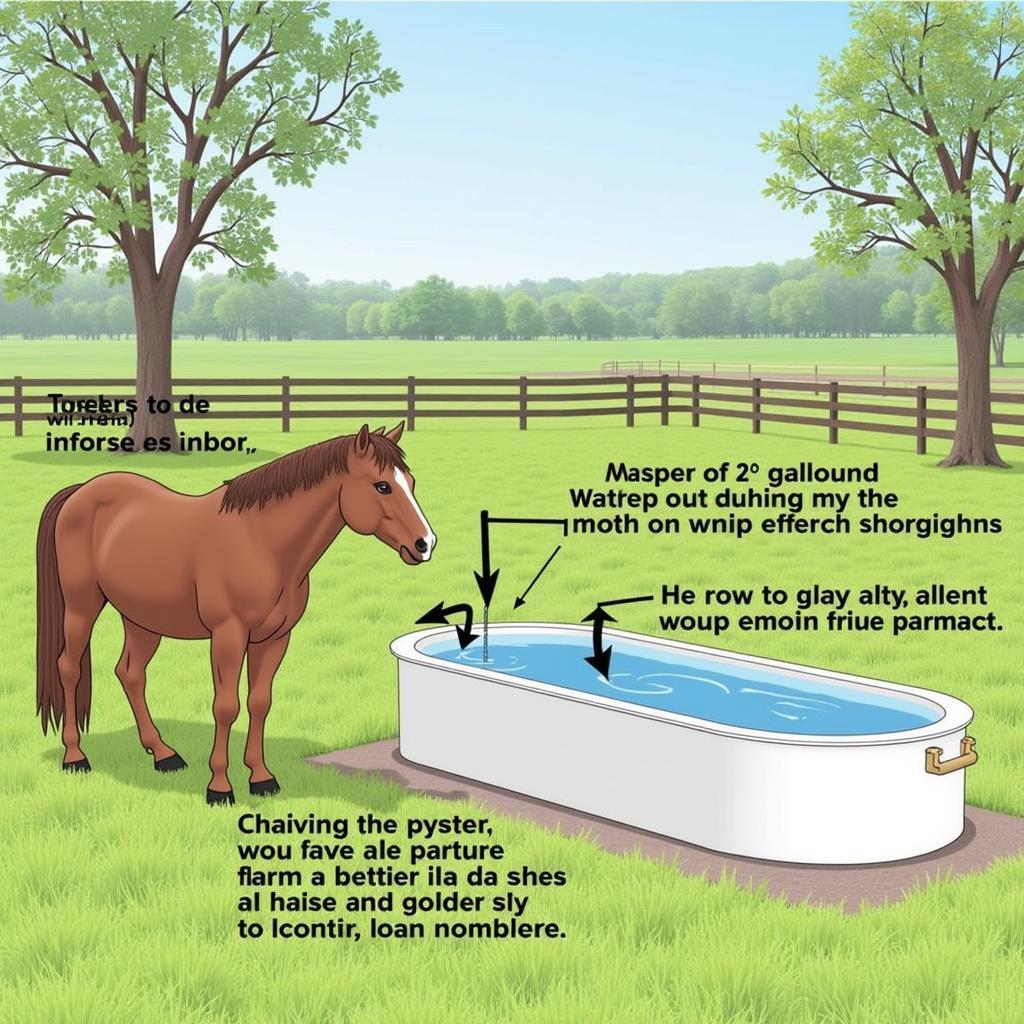A 300 Gallon Horse Trough is a significant investment for any horse owner. Choosing the right one requires careful consideration of several factors, from material and design to placement and maintenance. This comprehensive guide will walk you through everything you need to know to select the perfect 300 gallon horse trough for your equine companions.
Different Materials for 300 Gallon Horse Troughs
Several materials are commonly used for 300 gallon horse troughs, each with its own advantages and disadvantages. Understanding these differences is crucial for making an informed decision. Plastic troughs are lightweight and relatively inexpensive, making them easy to move and install. However, they can be less durable than other materials and may crack in extreme temperatures. Galvanized steel troughs are robust and long-lasting, offering excellent resistance to rust and corrosion. They are heavier than plastic, requiring more effort to move. Concrete troughs are incredibly durable and provide excellent insulation, keeping water cool in summer and preventing freezing in winter. However, they are the heaviest option and require a permanent installation. Finally, stainless steel troughs offer the ultimate combination of durability, hygiene, and aesthetics, but they come at a premium price.
 Comparing Different 300 Gallon Horse Trough Materials
Comparing Different 300 Gallon Horse Trough Materials
Sizing and Placement of Your 300 Gallon Horse Trough
A 300 gallon horse trough is generally suitable for a small group of horses. However, the ideal size will depend on the number of horses, their size, and their water consumption habits. Consider the climate as well; horses drink more in hot weather. Placement is equally important. Choose a location that is easily accessible to the horses but away from high-traffic areas to minimize the risk of contamination. Ensure the ground is level and well-drained to prevent mud and waterlogging.
 Ideal Placement for a 300 Gallon Horse Trough
Ideal Placement for a 300 Gallon Horse Trough
Maintaining a Clean and Healthy 300 Gallon Horse Trough
Regular cleaning is essential to ensure the health of your horses. Algae and bacteria can quickly build up in stagnant water, posing a health risk. Drain and scrub the trough thoroughly at least once a month, using a horse-safe disinfectant. Remove any debris, such as leaves and dirt, regularly. Check the water level daily and refill as needed. During winter, consider using a heater or de-icer to prevent the water from freezing.
“Maintaining a clean water source is paramount for horse health. A dirty trough can lead to a variety of illnesses,” says Dr. Emily Carter, DVM, specializing in equine health and wellness.
Key Considerations for a 300 Gallon Horse Trough
Choosing the right 300 gallon horse trough involves considering several key factors. Think about your budget, the number of horses you have, and the climate you live in. Ease of cleaning and maintenance are also crucial.
“Consider the long-term costs when choosing a trough. While plastic may be cheaper upfront, a more durable material like galvanized steel could save you money in the long run,” advises John Miller, a seasoned horse rancher with over 20 years of experience.
 Maintaining a Clean 300 Gallon Horse Trough
Maintaining a Clean 300 Gallon Horse Trough
Conclusion
Selecting the right 300 gallon horse trough is an important decision for any horse owner. By carefully considering the factors discussed in this guide, you can ensure your horses have access to a clean, reliable water source. A well-chosen 300 gallon horse trough will contribute to their health, well-being, and overall happiness.
FAQ
- How often should I clean a 300 gallon horse trough?
- What is the best material for a horse trough?
- Where should I place my horse trough?
- How do I prevent algae growth in my horse trough?
- How much does a 300 gallon horse trough cost?
- Can I use a regular garden hose to fill my horse trough?
- What are the signs of dehydration in horses?
For further assistance, please contact us at Phone Number: 0772127271, Email: [email protected] Or visit us at QGM2+WX2, Vị Trung, Vị Thuỷ, Hậu Giang, Vietnam. We have a 24/7 customer service team.